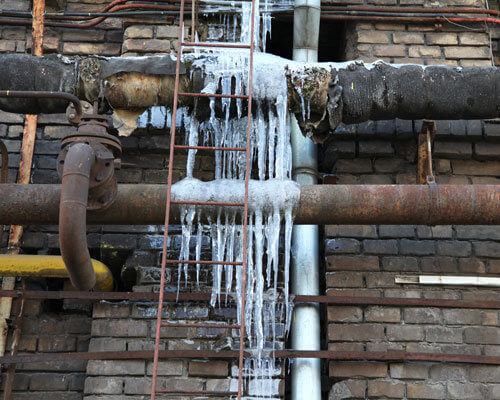Protecting Your Pipes from Cold Weather Issues: Critical Strategies
Protecting Your Pipes from Cold Weather Issues: Critical Strategies
Blog Article
The publisher is making several great pointers about How to prepare your home plumbing for winter weather in general in this content in the next paragraphs.

Cold weather can ruin your pipes, specifically by freezing pipelines. Below's how to stop it from taking place and what to do if it does.
Intro
As temperatures drop, the threat of frozen pipes rises, possibly bring about expensive repair work and water damages. Recognizing just how to avoid frozen pipes is critical for house owners in cool climates.
Comprehending Frozen Pipelines
What creates pipelines to freeze?
Pipelines freeze when revealed to temperature levels below 32 ° F (0 ° C) for expanded periods. As water inside the pipes ices up, it expands, taxing the pipeline wall surfaces and possibly causing them to rupture.
Threats and damages
Frozen pipelines can cause water system disturbances, home damages, and pricey fixings. Ruptured pipes can flooding homes and create extensive structural damage.
Indicators of Frozen Piping
Recognizing icy pipelines early can stop them from rupturing.
Exactly how to determine frozen pipelines
Try to find decreased water circulation from taps, unusual odors or sounds from pipelines, and noticeable frost on subjected pipes.
Prevention Tips
Insulating prone pipes
Cover pipelines in insulation sleeves or use warmth tape to safeguard them from freezing temperatures. Focus on pipes in unheated or outside areas of the home.
Home heating methods
Maintain indoor rooms effectively heated, especially areas with pipes. Open closet doors to allow warm air to flow around pipelines under sinks.
Shielding Exterior Pipes
Yard pipes and outdoor taps
Disconnect and drain yard pipes before winter months. Install frost-proof spigots or cover exterior taps with shielded caps.
What to Do If Your Pipelines Freeze
Immediate activities to take
If you presume frozen pipes, keep faucets open to ease pressure as the ice melts. Utilize a hairdryer or towels soaked in hot water to thaw pipes slowly.
Long-Term Solutions
Architectural modifications
Take into consideration rerouting pipes far from outside wall surfaces or unheated locations. Include additional insulation to attics, cellars, and crawl spaces.
Upgrading insulation
Buy top quality insulation for pipes, attics, and wall surfaces. Appropriate insulation aids preserve constant temperature levels and lowers the danger of frozen pipes.
Verdict
Preventing frozen pipes needs aggressive steps and fast actions. By recognizing the reasons, indications, and preventive measures, house owners can safeguard their pipes during winter.
5 Ways to Prevent Frozen Pipes
Drain Outdoor Faucets and Disconnect Hoses
First, close the shut-off valve that controls the flow of water in the pipe to your outdoor faucet. Then, head outside to disconnect and drain your hose and open the outdoor faucet to allow the water to completely drain out of the line. Turn off the faucet when done. Finally, head back to the shut-off valve and drain the remaining water inside the pipe into a bucket or container. Additionally, if you have a home irrigation system, you should consider hiring an expert to clear the system of water each year.
Insulate Pipes
One of the best and most cost-effective methods for preventing frozen water pipes is to wrap your pipes with insulation. This is especially important for areas in your home that aren’t exposed to heat, such as an attic. We suggest using foam sleeves, which can typically be found at your local hardware store.
Keep Heat Running at 65
Your pipes are located inside your walls, and the temperature there is much colder than the rest of the house. To prevent your pipes from freezing, The Insurance Information Institute suggests that you keep your home heated to at least 65 degrees, even when traveling. You may want to invest in smart devices that can keep an eye on the temperature in your home while you’re away.
Leave Water Dripping
Moving water — even a small trickle — can prevent ice from forming inside your pipes. When freezing temps are imminent, start a drip of water from all faucets that serve exposed pipes. Leaving a few faucets running will also help relieve pressure inside the pipes and help prevent a rupture if the water inside freezes.
Open Cupboard Doors
Warm your kitchen and bathroom pipes by opening cupboards and vanities. You should also leave your interior doors ajar to help warm air circulate evenly throughout your home.

As a fervent person who reads about How To Avoid Freezing Pipes, I imagined sharing that article post was important. Loved our content? Please share it. Help other people locate it. We love reading our article about 6 Ways to Prevent Frozen Pipes.
Click Here Report this page